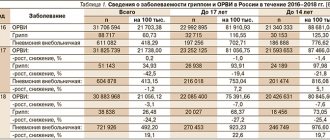Neo-Penotran Forte
Release form, composition and packaging
Vaginal suppositories are in the form of a flat body with a rounded end, white or almost white.
1 sup.
- Metronidazole (micronized) 750 mg
- miconazole nitrate (micronized) 200 mg
Excipients: vitepsol S55.
Clinical and pharmacological group
A drug with antibacterial, antiprotozoal and antifungal effects for topical use in gynecology.
pharmachologic effect
A drug with antibacterial, antiprotozoal and antifungal effects for topical use in gynecology.
The drug contains metronidazole, which has an antibacterial and antiprotozoal effect, and miconazole, which has an antifungal effect.
Metronidazole is active against Gardnerella vaginalis, Trichomonas vaginalis, anaerobic bacteria, including anaerobic streptococcus.
Miconazole nitrate has a wide spectrum of action. It is especially active against pathogenic fungi, including Candida albicans, and is also active against gram-positive bacteria.
Pharmacokinetics
Suction
The bioavailability of metronidazole when used intravaginally is 20% compared to oral administration. After vaginal administration, when equilibrium was reached, the concentration of metronidazole in plasma was 1.6-7.2 mcg/ml. Systemic absorption of miconazole nitrate with this route of administration is very low (approximately 1.4% of the dose), miconazole nitrate was not detected in plasma.
Metabolism and excretion
Metronidazole is metabolized in the liver. The hydroxyl metabolite is active.
T1/2 of metronidazole is 6-11 hours. Approximately 20% of the dose is excreted unchanged by the kidneys.
Indications for use of the drug
- vaginal candidiasis;
- bacterial vaginosis;
- trichomonas vaginitis;
- vaginitis caused by mixed infections.
Dosage regimen
The drug is administered intravaginally, 1 suppository at night for 7 days.
For recurrent vaginitis or vaginitis resistant to other types of treatment, Neo-Penotran® Forte should be used for 14 days.
Vaginal suppositories should be inserted deep into the vagina using the disposable finger tips contained in the package.
For elderly patients over 65 years of age, no dosage adjustment is required.
Side effect
In rare cases, hypersensitivity reactions (skin rash) and side effects such as abdominal pain, headache, vaginal itching, burning and vaginal irritation may occur.
Local reactions: miconazole nitrate, like all other antifungal agents based on imidazole derivatives that are introduced into the vagina, can cause vaginal irritation (burning, itching) (2-6%). Due to inflammation of the vaginal mucosa during vaginitis, vaginal irritation (burning, itching) may intensify after the introduction of the first suppository or by the third day of treatment. These complications disappear quickly as treatment continues. If severe irritation occurs, treatment should be discontinued.
Systemic side effects are very rare because plasma levels of metronidazole are very low following vaginal absorption. Side effects associated with systemic absorption of metronidazole include: hypersensitivity reactions (rare), leukopenia, ataxia, mental changes (anxiety, mood lability), convulsions; rarely - diarrhea, dizziness, headache, loss of appetite, nausea, vomiting, abdominal pain or cramps, changes in taste, constipation, dry mouth, metallic taste, increased fatigue.
Contraindications to the use of the drug
- I trimester of pregnancy;
- porphyria;
- epilepsy;
- severe liver dysfunction;
- patients under the age of 18 due to insufficient data on use in this age category, virgins;
- hypersensitivity to the active components of the drug or their derivatives.
Pregnancy and lactation
The drug can be used after the first trimester of pregnancy under medical supervision, provided that the expected benefit to the mother outweighs the potential risk to the fetus.
Breastfeeding should be stopped during treatment, since metronidazole passes into breast milk. Breastfeeding can be resumed 24-48 hours after the end of treatment.
Use for liver dysfunction
Contraindicated in severe liver dysfunction.
special instructions
Preclinical data indicate no specific risk to humans based on standard safety, pharmacology, repeated dose toxicity, genotoxicity, carcinogenic potential, and reproductive toxicity studies.
It is necessary to avoid drinking alcohol during treatment and for at least 24-48 hours after completion of the course due to the development of possible disulfiram-like reactions.
Caution should be exercised when using suppositories simultaneously with contraceptive diaphragms and condoms due to possible damage to the rubber base of the suppositories.
In patients with trichomonas vaginitis, simultaneous treatment of the sexual partner is necessary.
The patient should be informed that suppositories should not be swallowed or otherwise administered.
The results may change when determining the level of liver enzymes, glucose (hexokinase method), theophylline and procainamide in the blood.
Impact on the ability to drive vehicles and operate machinery
The drug does not affect the ability to drive vehicles or operate machinery.
Overdose
There are no data regarding overdose in humans with intravaginal use of metronidazole. However, when administered into the vagina, metronidazole may be absorbed in quantities sufficient to cause systemic effects.
Symptoms of metronidazole overdose: nausea, vomiting, abdominal pain, diarrhea, generalized itching, metallic taste in the mouth, movement disorders (ataxia), dizziness, paresthesia, convulsions, peripheral neuropathy (including after prolonged use in high doses), leukopenia, darkening of urine.
No symptoms of miconazole nitrate overdose have been identified.
Treatment: if a large number of suppositories are accidentally ingested, gastric lavage can be performed if necessary. Improvement in the condition after this can be achieved in persons who have taken up to 12 g of metronidazole orally. There is no special antidote. Symptomatic and supportive therapy is recommended.
Drug interactions
The interaction of metronidazole with ethanol can cause disulfiram-like reactions.
With simultaneous use of Neo-Penotran Forte with oral anticoagulants, an increase in anticoagulant effect is observed.
With the simultaneous use of Neo-Penotran Forte with phenytoin, a decrease in the concentration of metronidazole in the blood is observed while the concentration of phenytoin increases.
With simultaneous use of Neo-Penotran Forte with phenobarbital, a decrease in the concentration of metronidazole in the blood is observed.
When Neo-Penotran Forte is used simultaneously with disulfiram, side effects from the central nervous system (psychotic reactions) are possible.
With simultaneous use of Neo-Penotran Forte with cimetidine, the concentration of metronidazole in the blood may increase and the risk of developing neurological side effects may increase.
With simultaneous use of Neo-Penotran Forte with lithium, an increase in lithium toxicity may be observed.
With the simultaneous use of Neo-Penotran Forte with astemizole and terfenadine, metronidazole and miconazole suppress the metabolism of these substances and increase their concentrations in plasma.
Conditions for dispensing from pharmacies
The drug is available with a prescription.
Storage conditions and periods
The drug should be stored out of the reach of children at a temperature not exceeding 25°C. Do not store in the refrigerator. Shelf life: 2 years.








